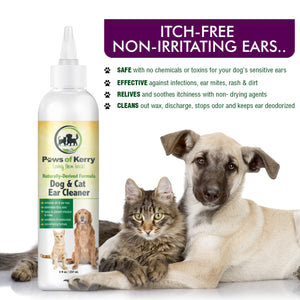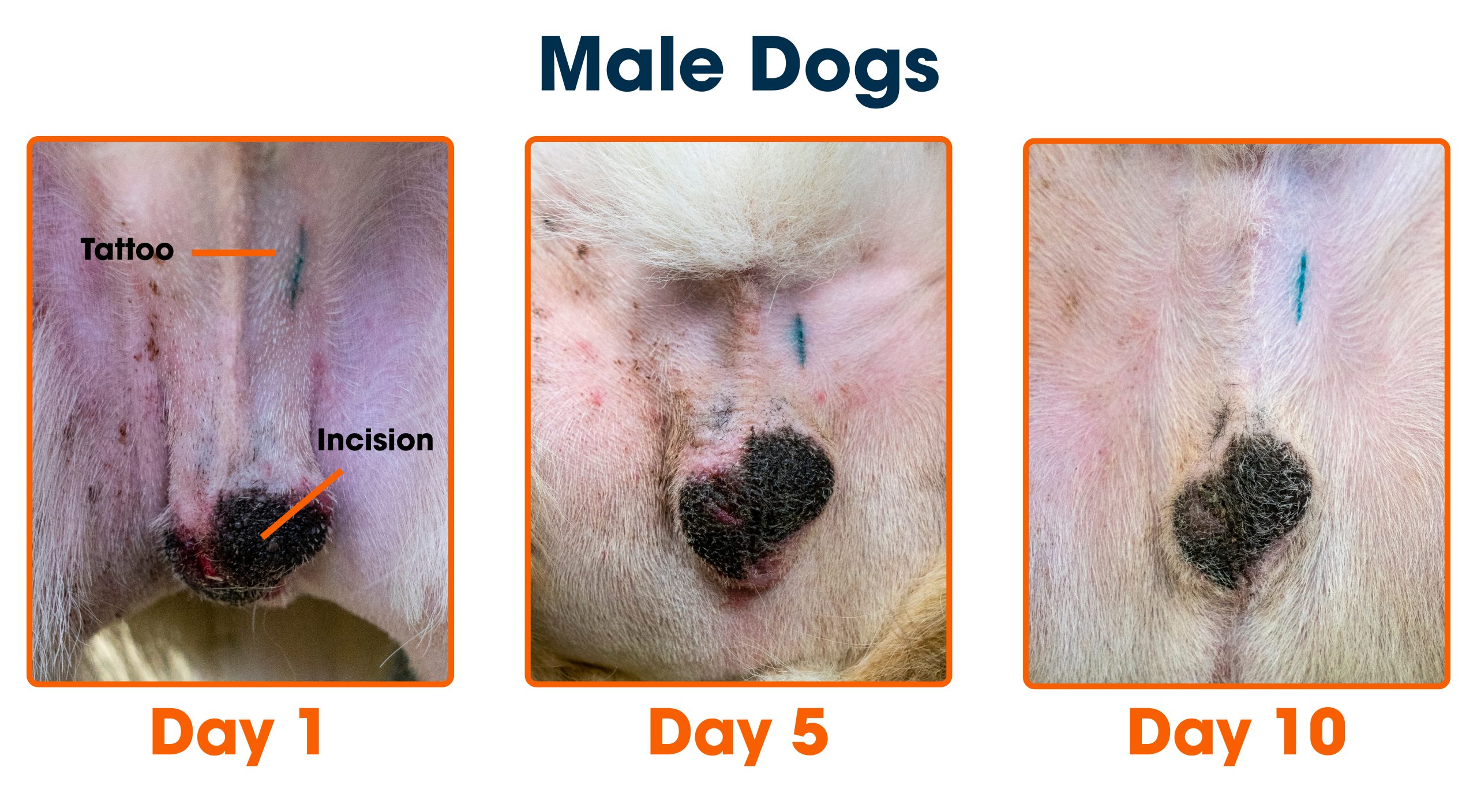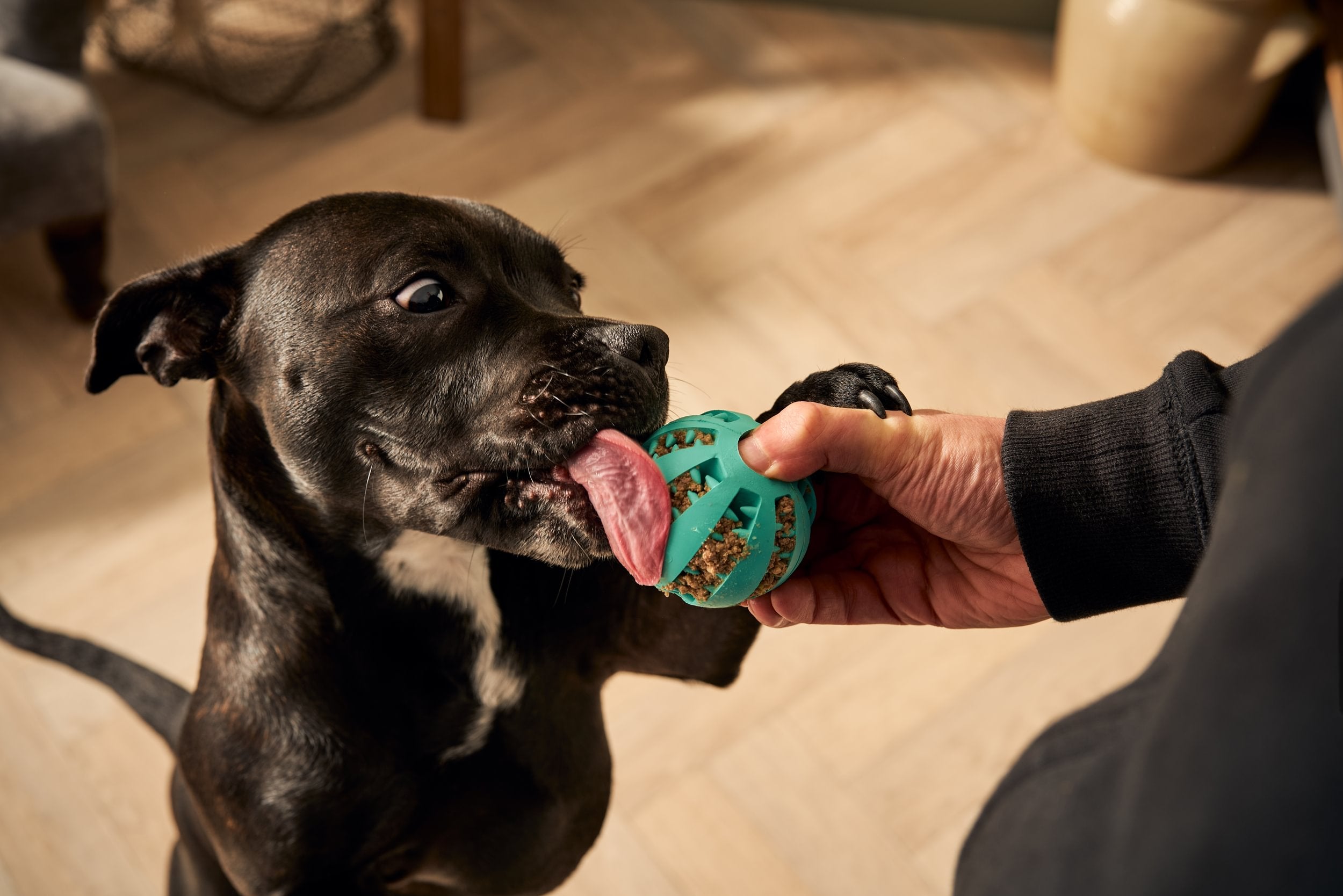If your dog is scratching its ears or shaking its head a lot, it could mean an ear infection. You want to help your furry friend feel better fast, but a trip to the vet might not be possible right now.
The good news? You can take steps at home to treat your dog’s ear infection safely and effectively. You’ll discover simple, proven methods to relieve your dog’s discomfort without rushing to the vet. Keep reading to learn how to protect your pet’s health and bring back their happy, wagging tail.

Credit: www.amazon.ca
Signs Of Dog Ear Infection
Recognizing the signs of a dog ear infection early can save your furry friend from discomfort and prevent the issue from worsening. Dogs can’t tell you when their ears hurt, so you need to be their eyes and ears. Paying attention to subtle changes in their behavior and ear condition helps you act quickly.
Common Symptoms To Watch
- Scratching or Pawing at the Ear:This is often the first sign your dog feels irritation or itchiness inside the ear.
- Head Shaking or Tilting:Frequent shaking or holding the head tilted to one side can indicate discomfort or pain.
- Redness and Swelling:Look inside the ear flap and canal for redness or swelling, which shows inflammation.
- Odor:A bad smell coming from your dog’s ear is a strong indicator of infection.
- Discharge:Any unusual fluid, whether clear, yellow, or dark, is a warning sign.
- Hair Loss Around the Ear:Excessive scratching can cause hair to fall out near the infected area.
Have you noticed your dog suddenly becoming sensitive when you touch their ear? This sensitivity often means pain or discomfort and should never be ignored.
When Infection Becomes Severe
If you see persistent symptoms lasting more than a few days, it might mean the infection is worsening. Severe infections can cause your dog to lose balance or act lethargic.
Look for signs like:
- Severe Swelling:The ear may become so swollen that it looks misshapen.
- Bleeding or Open Sores:Scratching can cause wounds that might bleed or ooze.
- Disorientation or Loss of Balance:Inner ear infections can affect your dog’s coordination.
Ignoring these signs can cause lasting damage. Have you ever wondered how much pain your dog might be hiding? Catching these symptoms early gives you the chance to try safe home treatments before considering a vet visit.

Credit: www.fitwarm.com
Causes Of Ear Infections In Dogs
Ear infections in dogs happen for many reasons. Knowing the causes helps treat the problem faster. Most infections arise from irritation or germs inside the ear. Dogs with floppy ears or allergies have higher risks. Dirt, moisture, and parasites also play a role. Understanding these causes helps you care for your dog better.
Allergies And Irritants
Allergies often trigger ear infections in dogs. Food allergies or pollen can cause itchiness and swelling. The dog scratches its ear, causing damage to the skin. Chemicals in shampoos or cleaning products can irritate ears too. This irritation makes ears vulnerable to infection.
Bacterial And Yeast Growth
Bacteria and yeast naturally live in dog ears. When ears get moist or dirty, these microbes grow quickly. This overgrowth leads to infection and bad odor. Warm and wet environments inside the ear invite bacteria and yeast. Dogs who swim or bathe often face this problem.
Ear Mites And Parasites
Ear mites are tiny bugs that live in dog ears. They cause intense itching and inflammation. Scratching spreads the mites and worsens the infection. Parasites can also bring bacteria into the ear. These infections need quick attention to stop damage.
Safe Home Remedies
Safe home remedies can provide relief and support your dog’s healing process without rushing to the vet. However, treating an ear infection at home requires care, gentleness, and the right materials to avoid worsening the condition. Knowing how to clean, disinfect, and soothe your dog’s ears safely can make a big difference in their comfort and recovery.
Cleaning The Ear Safely
Start by inspecting your dog’s ears gently. Use a soft cloth or cotton ball dampened with warm water to wipe away visible dirt and wax. Avoid using cotton swabs inside the ear canal, as they can push debris deeper and cause damage.
Hold your dog calmly and make the cleaning a brief, stress-free routine. If your dog resists, try breaking the cleaning into smaller sessions or offer treats to keep them cooperative. Consistency is key to preventing infections from worsening.
Natural Antiseptics To Use
Apple cider vinegar diluted with equal parts water is a popular natural antiseptic that can help restore your dog’s ear pH and fight bacteria. Use a dropper to apply a small amount and gently massage the base of the ear to distribute the solution.
Alternatively, witch hazel is another gentle antiseptic that soothes inflammation and cleans without harsh chemicals. Always test a small area first to ensure your dog doesn’t react negatively, and never apply if the ear is raw or bleeding.
Soothing Itch And Inflammation
Coconut oil is excellent for calming itchy, inflamed ears. It has natural antifungal and antibacterial properties and provides moisture to dry, irritated skin. Warm it slightly before applying a few drops into the ear canal, then massage gently.
Aloe vera gel, pure and free from additives, can also reduce redness and itchiness. Apply it carefully around the outer ear—avoid deep insertion. If your dog’s scratching continues or worsens, consider whether a vet visit might be necessary despite home care.

Credit: pawsofkerry.com
Diy Treatment Steps
Taking care of your dog’s ear infection at home requires patience and the right approach. You need to be gentle and thorough to avoid making the problem worse. Let’s break down the steps you can take to help your furry friend feel better without rushing to the vet.
Preparing Your Supplies
Gather everything before you start. You will need:
- Clean cotton balls or gauze pads
- Ear cleaning solution (preferably a vet-approved or homemade mix like diluted apple cider vinegar)
- Fresh towels to keep your dog comfortable
- Gloves to keep things hygienic
- A treat to reward your dog afterward
Having all these ready helps you stay calm and efficient during the cleaning process. Does your dog get anxious easily? Preparing treats can turn this into a positive experience for them.
Step-by-step Cleaning Process
Start by gently holding your dog’s ear flap up. This gives you clear access to the ear canal without causing discomfort.
Moisten a cotton ball or gauze with the cleaning solution and carefully wipe away any dirt or wax you see. Avoid pushing debris deeper into the ear.
Use a fresh cotton ball for each wipe to prevent spreading bacteria. If your dog shakes their head, it might help loosen stubborn debris.
Ask yourself: is the ear still red or smelly after cleaning? If yes, this could signal a deeper problem requiring professional care.
Applying Home Remedies Properly
After cleaning, you can apply a gentle home remedy to soothe irritation. Coconut oil is a popular choice due to its natural antibacterial properties.
Warm a small amount of coconut oil until it’s liquid but not hot. Use a dropper to place a few drops into your dog’s ear canal, then gently massage the base of the ear to spread it.
Be cautious not to overdo it—too much oil can trap moisture and worsen the infection. How often you apply depends on the severity; once or twice a day is usually enough.
Keep an eye on your dog’s reaction. If they scratch more or seem in pain, stop the treatment and consult a vet.
Precautions And Warnings
Treating a dog’s ear infection at home requires care and attention. Mistakes can worsen the problem. Knowing the right precautions helps keep your dog safe and comfortable.
Some infections need medical treatment beyond home care. Recognizing when to stop and seek help is crucial. Understanding the signs protects your dog’s health.
When To Avoid Diy Methods
- Ear injury or bleeding is present.
- Dog shows severe pain or distress.
- Discharge is thick, dark, or foul-smelling.
- Ear flap appears swollen or hot to touch.
- Dog has chronic or repeated infections.
- Home remedies cause irritation or worsening symptoms.
Signs You Need Professional Help
- Dog shakes head or scratches ears constantly.
- Hearing loss or balance problems occur.
- Infection lasts more than a week despite care.
- Redness spreads outside the ear canal.
- Fever or lethargy develops alongside ear issues.
- Persistent odor or pus comes from the ear.
Preventing Future Ear Infections
Stopping ear infections before they start can save your dog a lot of discomfort and you a trip to the vet. Prevention focuses on keeping your dog’s ears clean, dry, and free from irritants that can cause infections to flare up again. Small daily habits can make a big difference in your dog’s ear health.
Regular Ear Cleaning Tips
Cleaning your dog’s ears regularly helps remove dirt, wax, and moisture that breed bacteria and yeast. Use a vet-approved ear cleaner and a soft cotton ball—avoid cotton swabs that can push debris deeper or injure the ear canal.
Gently wipe the inside of the ear flap and the entrance of the ear canal. If you notice any redness, bad odor, or excessive wax, it’s a sign to clean more carefully or consult a vet. How often you clean depends on your dog’s breed and activity level, but once a week is a good starting point.
Diet And Allergy Management
Diet plays a bigger role in ear health than many realize. Allergies to food or environmental factors can cause inflammation and make ears more prone to infection.
If your dog frequently scratches or shakes its head, consider if allergies are the root cause. Talk to your vet about an elimination diet or hypoallergenic foods. Adding omega-3 fatty acids can also reduce inflammation and improve skin and ear health.
Maintaining Ear Dryness
Moisture trapped in your dog’s ears creates a perfect environment for infections to grow. After baths or swimming, make sure to gently dry the ears with a soft towel.
If your dog loves water, consider using ear drying drops designed for pets. Also, keep hair trimmed around the ear canal to improve airflow. Could a simple change like drying ears better after playtime reduce those recurring infections?
Frequently Asked Questions
How Can I Treat My Dog’s Ear Infection At Home?
Clean your dog’s ears with a vet-approved solution gently. Use a mix of equal parts water and apple cider vinegar. Dry the ears thoroughly. Avoid inserting anything deep into the ear canal. Regularly check for signs of improvement or worsening.
What Natural Remedies Help With Dog Ear Infections?
Apple cider vinegar diluted with water can help balance ear pH. Coconut oil has antimicrobial properties to soothe irritation. Calendula oil may reduce inflammation. Always patch-test first and avoid if eardrums are damaged. Natural remedies support treatment but don’t replace professional advice.
When Should I Avoid Home Treatment For Ear Infections?
Avoid home treatment if your dog shows severe pain, swelling, or discharge. If symptoms worsen or persist beyond three days, seek veterinary care. Dogs with ruptured eardrums or chronic infections need professional diagnosis and treatment. Early vet intervention prevents complications.
How Do I Clean My Dog’s Ears Safely?
Use a vet-recommended ear cleaner or a mild vinegar-water solution. Apply the solution to a cotton ball, not directly in the ear. Gently wipe the visible ear canal and outer ear. Never use cotton swabs or insert objects deep inside.
Clean ears once or twice weekly.
Conclusion
Treating your dog’s ear infection at home requires care and patience. Clean the ears gently with safe solutions. Use natural remedies to soothe irritation and reduce swelling. Watch your dog closely for signs of improvement or worsening. Avoid harsh chemicals or deep cleaning that may hurt your pet.
Remember, serious infections need professional help. Keep your dog’s ears dry and clean to prevent future problems. Taking small, consistent steps can help your dog feel better soon. Your attention and care make a big difference in healing.







